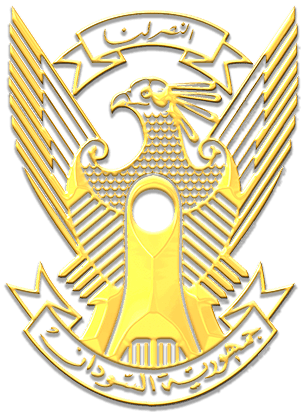What is Profession
“An occupation whose core element is work based upon the mastery of a complex body of knowledge and skills. It is a vocation in which knowledge of some department of science or learning or the practice of an art founded upon it is used in the service of others. Its members are governed by codes of ethics and profess a commitment to competence, integrity and morality, altruism, and to the promotion of the public good within their domain. These commitments form the basis of a social contract between a profession and society, which in return grants the profession a monopoly over the use of its knowledge base, the right to considerable autonomy in practice and the privilege of self-regulation. Professions and their members are accountable to those served and to society.”
The marks of a profession are:
- Certified competence in a specialized body of knowledge and skills.
- An acknowledgment of specific duties and responsibilities toward the individuals it serves and toward society.
- The right to train, admit, discipline and dismiss its members for failure to sustain competence or observe the duties and responsibilities.
Why is Professionalism Important?
“ Neither economic incentives, nor technology, nor administrative control has proved an effective surrogate for the commitment to integrity evoked in the ideal of professionalism ”. Sullivan, 1995
The Physician Has Two Roles:
- Healer
- Professional
The two roles:
- Served simultaneously
- Analyzed separately
The Primary Role is that of the Healer
Society uses the concept of the professional as a means of organizing the delivery of complex services which it requires, including that of the healer. “The Professional Model”
The Social Contract
The social contract in health care is based on professionalism It serves as the basis for the expectations of medicine and society This contract has always been:
- Implicit (largely unwritten).
- Evolving(being constantly renegotiated)
Society’s Expectations of Medicine
- To fulfill the role of the healer.
- Guaranteed competence.
- Altruistic service.
- Morality, integrity, honesty.
- Accountability.
- Transparency.
- Source of objective advice.
- Promotion of the public good.
Medicine’s Expectations of Society
- Trust.
- Autonomy.
- Self-regulation.
- Health care system.
- Value- laden.
- Adequately funded.
- Role in public policy.
- Monopoly.
- Rewards.
the contract Depends on
- mutual trust
- reasonable demands on both sides
- communication
A Physician Charter
Three Fundamental Principles:
- Primacy of Patient Welfare
- Serving the welfare of the patient.
- Altruism is key to the doctor-patient relationship.
- Patient Autonomy
- Empowering patients to make informed decisions.
- Honor patient choice.
- Social Justice
- Fair distribution of resources.
- Eliminate discrimination.
The Charter on Medical Professionalism
The charter’s 3 principles are served by professional commitment to:
- competence.
- honesty with patients.
- patient confidentiality.
- appropriate relationships with patients.
- improving quality of care.
Professional Responsibilities
- Primacy of Patient Welfare:
- Serving the welfare of the patient.
- Altruism is key to the doctor-patient relationship.
- Patient Autonomy:
- Empowering patients to make informed decisions.
- Honor patient choice.
- Social Justice:
- Fair distribution of resources.
- Eliminate discrimination.
- Commitment to maintaining appropriate relations with patients:
- Avoiding the exploitation of patients for sexual advantage, personal financial gain, or any other private purpose.
- Commitment to improving the quality of care:
- Working collaboratively to create systems contributing got continuous quality improvement in health care.
- Commitment to improving access to care:
- Reducing barriers of equitable health care based on education, laws, geography, and social discrimination.
- Commitment to a just distribution of finite resources:
- Providing health care based on wise and cost-effective management of limited resources.
- Commitment to scientific knowledge:
- Upholding current scientific standards and promoting the creation and appropriate use of new knowledge.
- Commitment to maintaining trust by managing conflicts of interest:
- Compromising professional responsibilities by pursing private or personal gain.
- Commitment to professional responsibilities:
- Working collaboratively and treating one another with respect.
Professionalism is associated with important
- Increased patient satisfaction and trust.
- Increased patient treatment adherence .
- Patients more likely to “stay with” and recommend physician.
- Fewer patient complaints .
- Less patient litigation .
- Overall physician excellence.
Teaching & Training
What Should Medicine Do?
Make students, trainees, and practitioners aware of:
- the nature of professionalism.
- the obligations necessary to sustain it.
- its relationship to the social contract.
The Challenge:
- How to impart knowledge of professionalism to students, residents, and faculty.
- How to encourage the behaviors characteristic of the good physician.
Professionalism can be taught
“Advancing Education in Medical Professionalism.” ACGME Outcome Project, 2004.
- Formal and informal curricula influence professional attitudes and beliefs, moral reasoning, and behaviors.
- Role models influence attitudes and behavior, “hidden curriculum”
How do students learn professionalism
- Bring some to medical school with them.
- Learn some through the formal curriculum.
- Learn some from role models.
- Learn most from the hidden curriculum.
Formal curriculum
- Lectures.
- Seminars.
- Reading.
- Passive: reading, listening, thinking.
Explicit Curriculum Topics
- Bioethical dilemmas.
- Conflicts of Interest.
- Breaking “bad news”.
- Dealing with death & dying.
- “Hand-off “in patient care.
- Conflict resolution.
- oundary issues.
- Impaired physician.
- Student & resident abuse.
- Medication errors and “reconciliation.
Informal (hidden) curriculum
- General clinical experience.
- Peer interactions.
- Ward rounds.
- Multi disciplinary team’s.
- Role model.
- Powerful embedded in action.
How to teach professionalism
- Cognitive base: teach it explicitly.
- Self-reflection: encourage the active process through out the curriculum.
- Role modeling: requires knowledge and self-awareness.
- the environment: must support professional values.
SMC Initiatives
- SMC booklet on Good Medical Practice, click here to download.
- Undergraduate modules on professionalism.
